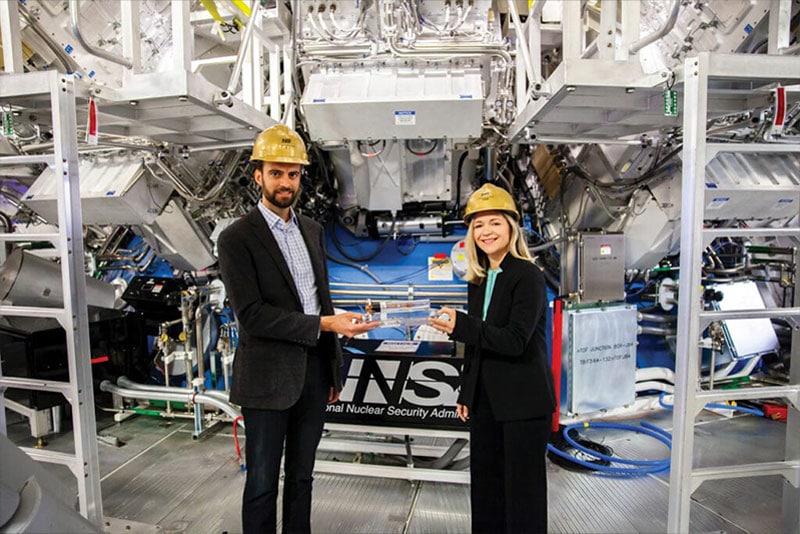
Igniting fusion’s future
U-M engineers lead advances in fusion research that could one day provide humans with abundant, clean, carbon-free energy.
In December 2022, an experiment designed and led by Michigan Engineering alum Annie Kritcher took a monumental step toward a long-held technological dream—harnessing the power of the stars for abundant, emissions-free energy without long-lasting nuclear waste.
Her team successfully achieved fusion ignition—something other scientists had been trying for more than 60 years. U.S. Department of Energy Secretary Jennifer Granholm called the accomplishment “one of the most impressive scientific feats of the 21st century.”
This breakthrough is, in part, the result of the University of Michigan’s decades of leadership in nuclear energy research. The University’s Nuclear and Radiological Sciences department, the second oldest of its type, is consistently ranked No. 1 in the country. The Michigan Memorial Phoenix Project, established following World War II, has been investigating peaceful uses of nuclear technology since 1953. This long-term dedication and record of excellence has cemented Michigan Engineering and its graduates as leaders in fusion research.

Abundant clean energy could radically change what is possible in sustainability. It could power global economies without exacerbating global warming. And it is key to scaling recycling, making the recovery of materials that have already been made into products cost-competitive with mining, drilling or otherwise harvesting new raw materials.
That’s why researchers in academia and industry alike have been chasing the dream of fusion for decades. Today, they’re driven by the urgency of addressing climate change and, in the case of the dozens of private startups that have sprung up in recent years, the potential payoff of a lucrative new energy source.
The private fusion startups—more than 30 of them as of an October 2021 survey by the Washington D.C.-based Fusion Industry Association—have attracted more than $5 billion in funding from the likes of Google, Bill Gates, Jeff Bezos, Shell Oil Company and others.
One of the most well-funded, Helion Energy, was founded by Michigan Engineering alum David Kirtley. Helion is betting that it can generate fusion power with a series of pulsed fusion reactions rather than a self-sustaining reaction—more like a string of firecrackers than a campfire. This string of reactions would take place at lower temperatures than larger fusion reactors, sidestepping some physics challenges and, the company claims, enabling smaller, cheaper fusion generators that could fit onto a train car or a tractor trailer.
Kirtley claims that Helion will demonstrate electricity production by 2024, and the company has a contract to begin selling power to Microsoft in 2028.

But while Kritcher’s research literally changed the field overnight, and these startups have ambitious plans for the near-future, other fusion researchers say it will likely still be decades before fusion supplies significant amounts of energy to the grid.
“I believe we’re in a period similar to when fission scientists were still doing bench-top experiments in their labs,” said Ryan McBride, a U-M professor of nuclear engineering and radiological sciences and director of U-M’s Plasma, Pulsed Power, and Microwave Laboratory. “It’s just such a big leap to go from demonstrating ignition to getting fusion power on the grid. Are we 20 years away? I don’t know, it could be another 50 years easily.”
While fusion companies may be years from producing any electricity, they’re already generating opportunities for a new generation of fusion scientists. Today’s grads have their choice of good-paying, energy-focused jobs in the field.
Carolyn Kuranz, a U-M associate professor of nuclear engineering and radiological sciences, is pleased to see fusion receiving an influx of interest and investment. While she tells her students to exercise caution, she also encourages them to enjoy the fact that they’ve come up in a boom time for fusion.
“The fact is, many of these companies will fail. But I don’t think there is anything wrong with a company if they do good science and fail. If you have good ideas and things don’t work out, that’s just science. This is the time for us to take a chance on fusion, because there’s no way society can rely on renewables alone … and we’re running out of time.”